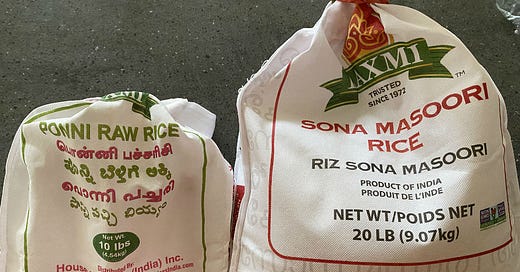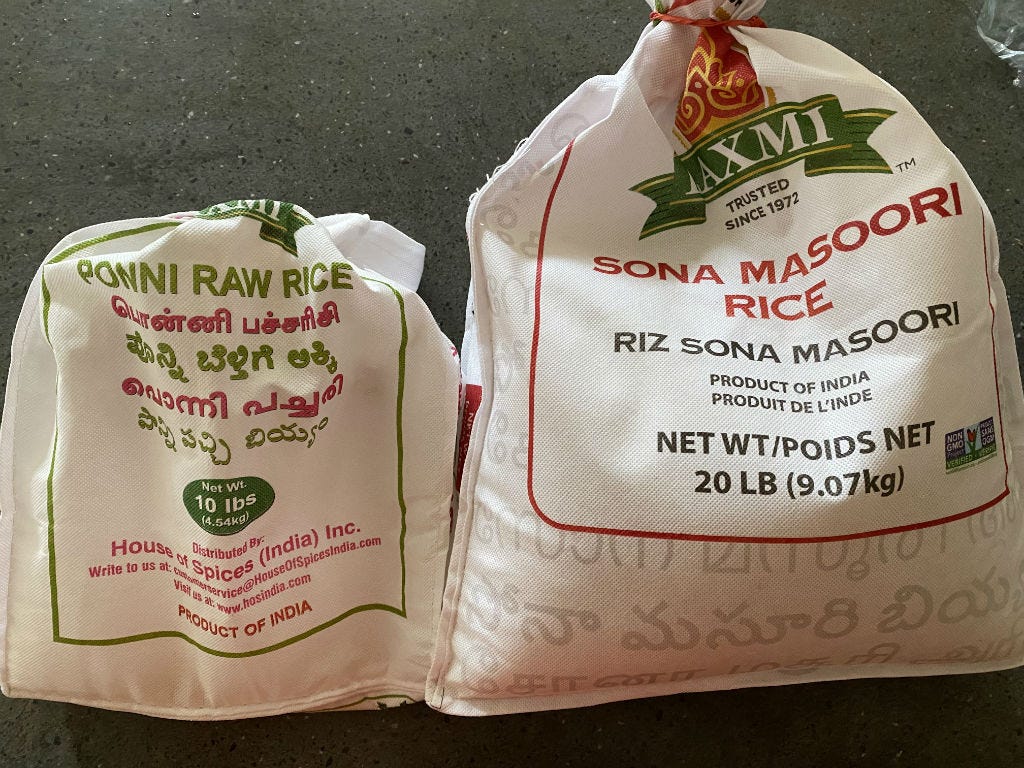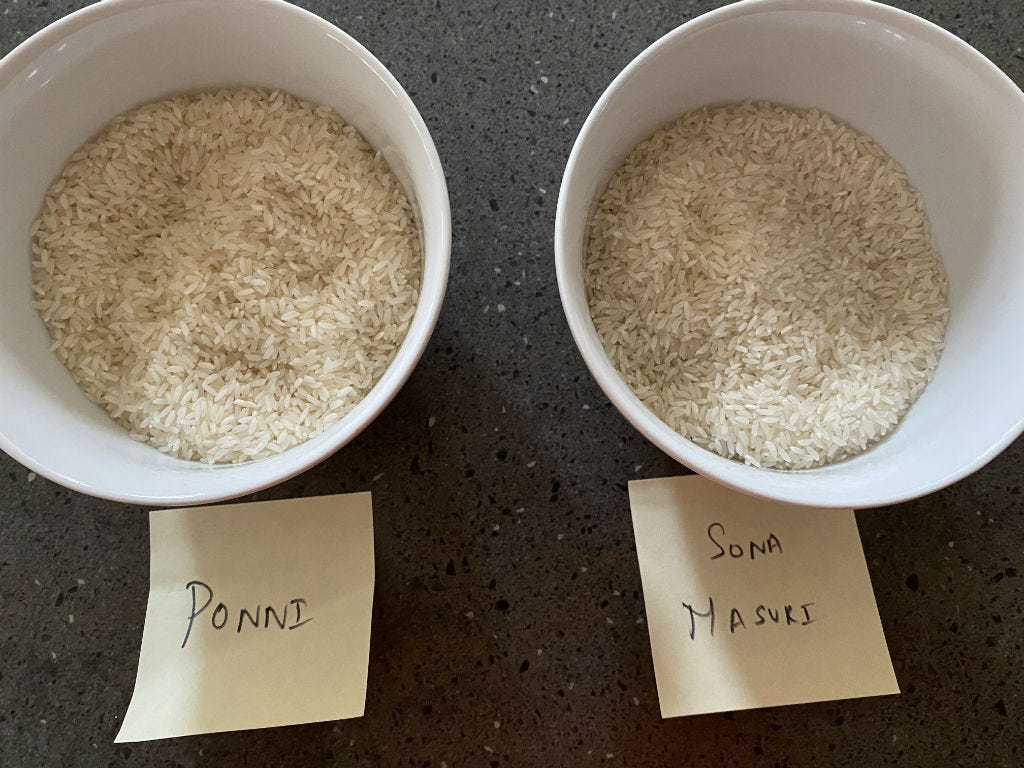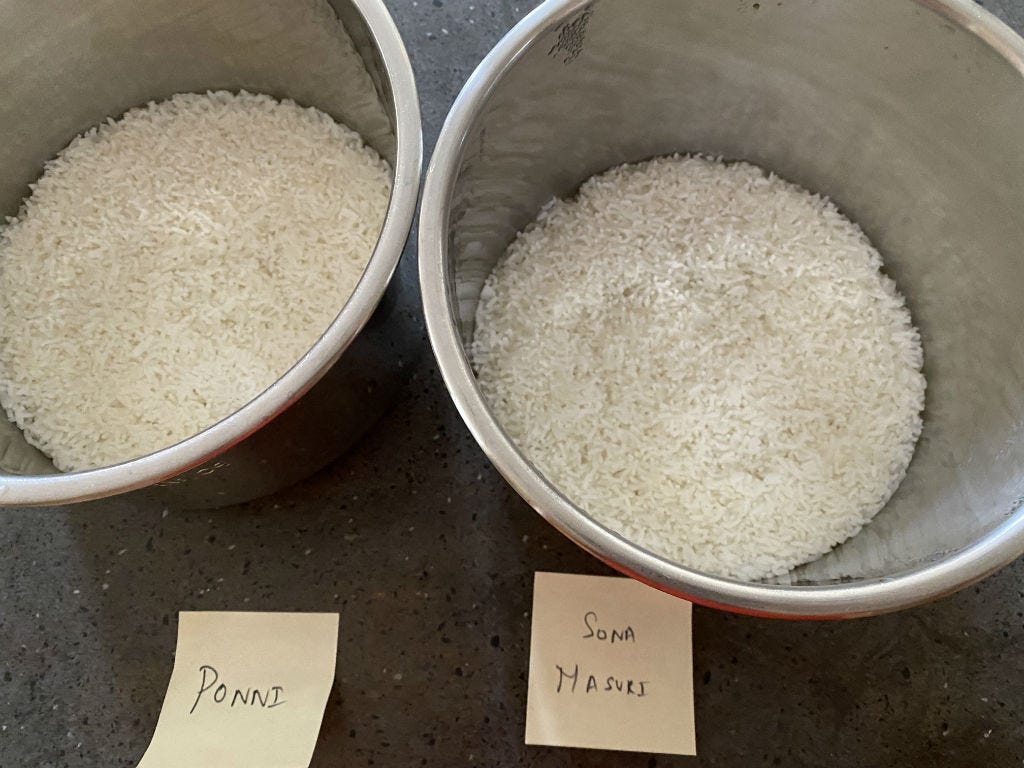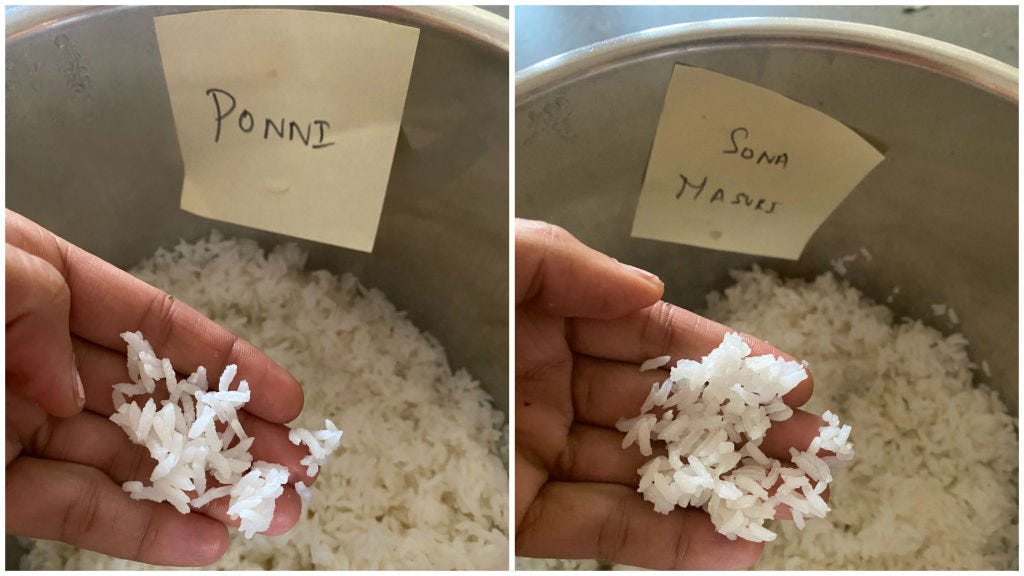Ponni Rice vs Sona Masuri Rice
The 2 most popular varieties of white rice in South India are Ponni Rice and Sona Masuri Rice. Are there any major differences between the 2? I decided to cook them side by side in identical manner and examine the result.
My parents always preferred Ponni and my in-laws preferred Sona Masuri, and I could not, for the life of me, figure out what the big difference was. I picked up a few soft differences here and there based on their descriptions, but I wanted to have a clearer understanding by studying them side by side.
I figured there may be others in the same boat. Hence I am sharing what I observed with you all.
Here is what I did:
I used the same company - Laxmi brand for the 2 varieties of rice.
I measured out 1 cup of rice of each variety
I cooked them both in the rice setting (Instant Pot - 12 minutes) with 1:2 water ratio.
Ok, now don't come at me with the 'knuckle-method' of cooking rice. That does not work for us at our home, and you will see soon below why. So, anyway, here I used a standard 1:2 rice:water ratio for both the varieties.
Here's how it came out cooked:
From the bird's eye view, I admit, they look quite similar.
But there are differences - subtle but discernible differences for sure....
Difference between Ponni and Sona Masuri
Sona Masuri was a few shades whiter than Ponni. I am not even sure if you can see this difference in the photographs, but when I saw them side by side, I could tell that Ponni had a tad yellow tinge when compared to Sona Masuri
Ponni had fatter grain size than Sona Masuri. I wish I got a digital caliper to actually measure the difference, that way I could have reported numbers. Oh, well, maybe next time....But even looking at the photos side by side should give you a general idea.
3. Sona Masuri was a much more fragrant rice than Ponni. Ponni did not have any fragrance, it was bland and smelled of cooked starch. I don't consider this a plus or minus for either grain - it depends on the application and the user's personal preference.
In fact, I think the smell of Sona Masuri is what makes it attractive to folks who love it and off-putting to those who are not used to it.
4. Final difference and for me the most important difference was that Ponni rice felt dry even with 1:2 water ratio. And while this may alarm Basmati rice users or Dan Souza fans (while I am one too, I am perfectly ok with disagreeing on his rice advice based on cultural differences and my personal experiences), here's what I mean...
What do I mean by "Ponni felt dry"? You see, traditionally in Tamil Nadu, we want the rice to integrate with the sambar and rasam with which it is served. Which means, if your grain is separate-separate or feels hard to the tooth (called as 'vara-vara' in tamil), it does not merge well with the stew.
When I cook Ponni for the family, I can easily even use 1:3 rice: water ratio and that works out perfect for my mom. I am not saying everyone should use 1:3 water with Ponni.
But, when compared to Sona Masuri, which tasted perfectly fine with 1:2 water ratio, Ponni seemed to be a 'thirstier' grain that needed more water.
Conclusion
So, in conclusion, when compared to Sona Masuri, Ponni was:
Less white
Fatter grain
Less Fragrant
Needed more water to cook well
Now, this conclusion is not a scientific conclusion, merely an observation. Take it as you will. I hope this helps you better with some understanding of the differences in the rice varieties - Ponni and Sona Masuri.
What has your experiences and observations been with these 2 grain varieties? Is there any similar questions with other grain varieties that have always confused you? Let me know in the comments below!!

